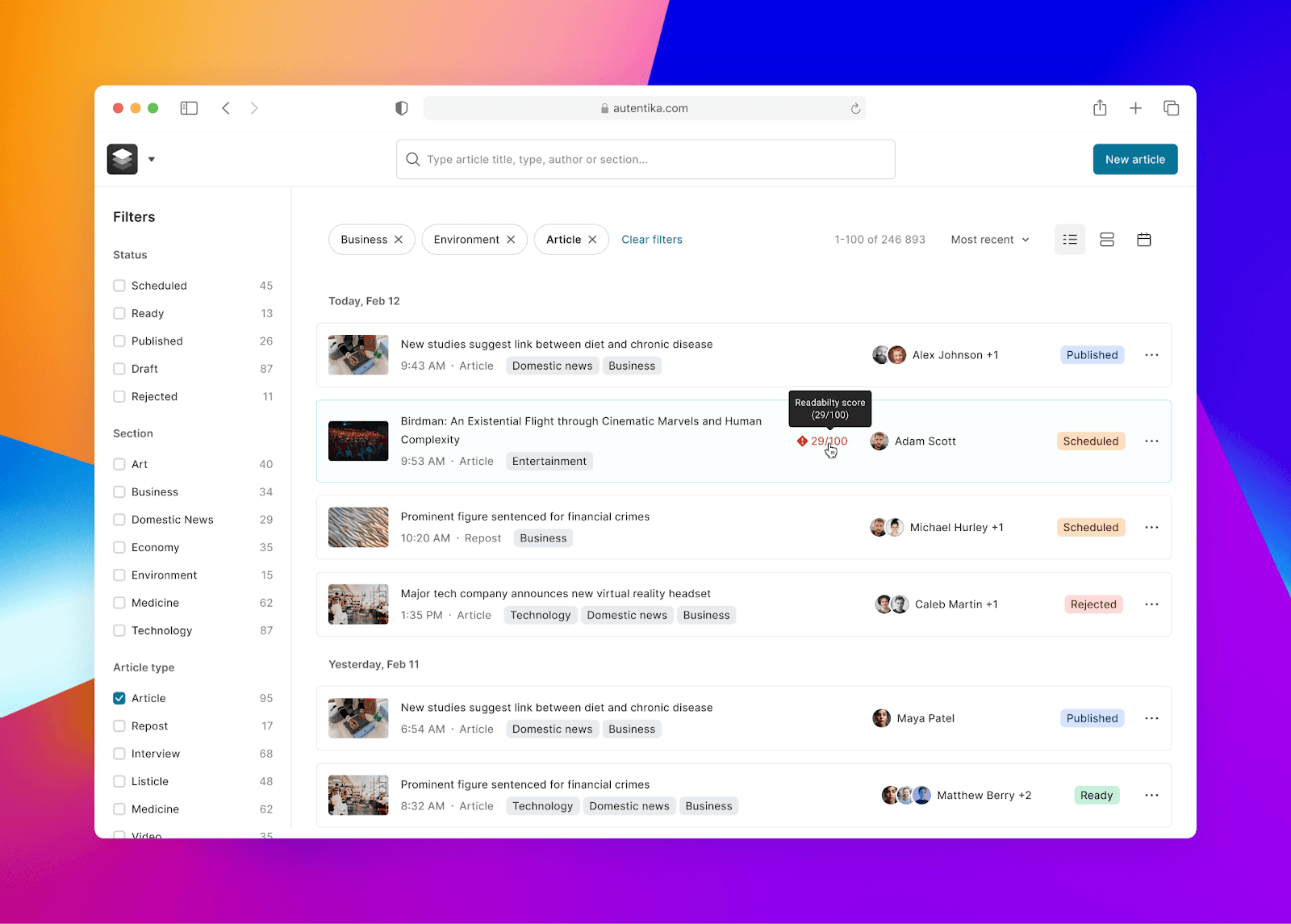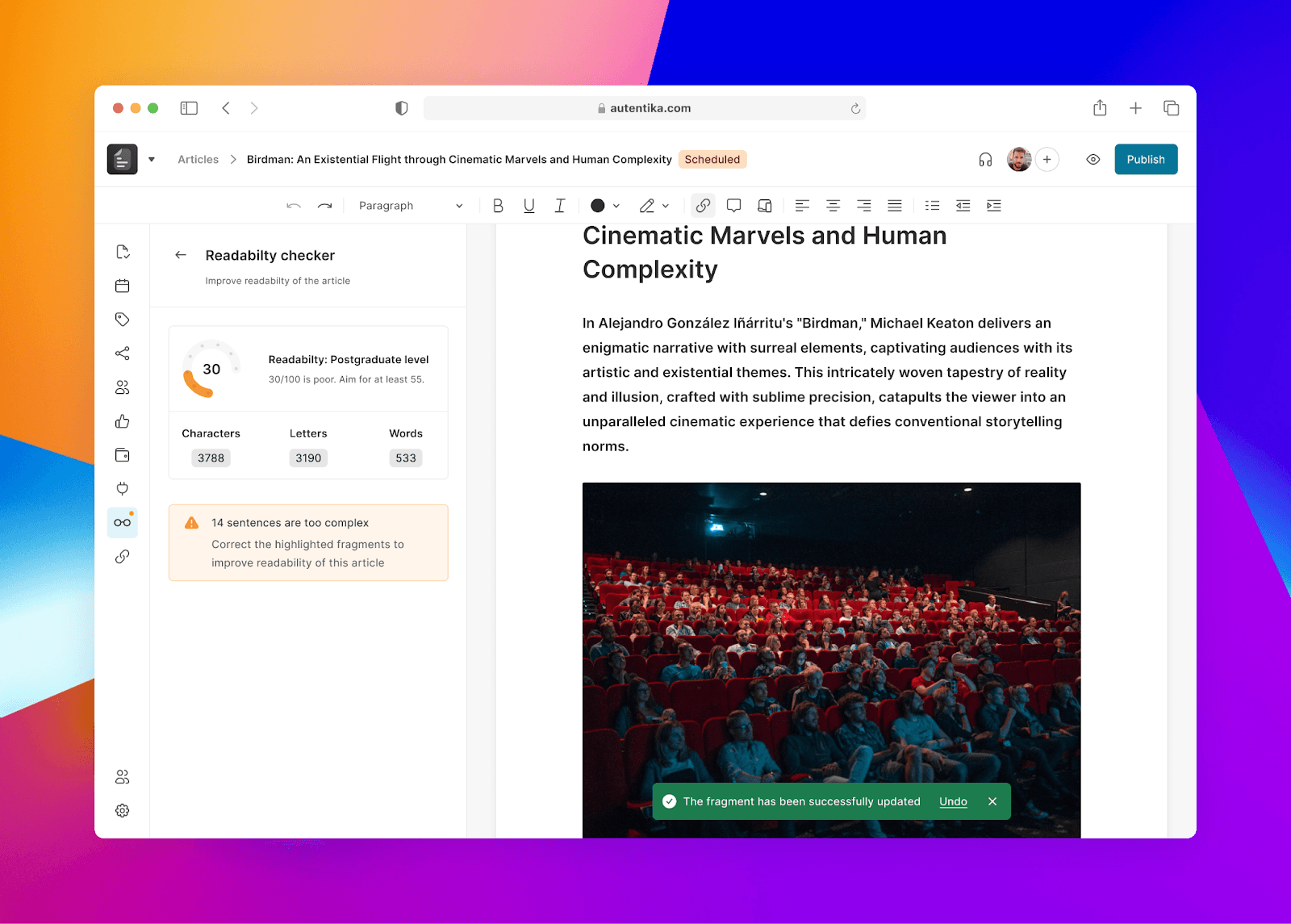AI concepts for newsrooms: Part two
28 Oct 2024
After launching over 30 proofs-of-concepts at the intersection of AI and journalism, we further explore what’s possible with new PoCs designed to enhance newsroom efficiency, content quality, and audience engagement.
In this second part of our series, we’re introducing some new proofs-of-concept features to demonstrate how AI can further assist journalists and editors in their daily work. Let’s explore how these features when implemented into editorial tools, can help journalists and editors.
Take a look:
AI concepts for newsrooms: A/B title testing for optimized readers' engagement
PoC: "Hunting Dog" – competitor plagiarism monitoring
Paywall optimization with AI: A POC for premium content management
1) Language simplification for articles
This feature simplifies complex language within an article to make it more accessible to a broader audience, ensuring clarity without sacrificing the depth of content.
The system uses advanced language processing algorithms to identify sentences or phrases that may be too technical, wordy, or difficult for the average reader to understand. It then suggests simplified alternatives that maintain the original meaning while improving readability.

The system shows a list of articles and their readability scores.
The user enters a selected article. The system shows the readability score and highlights how many sentences are too complex to understand.

The system highlights which sentences are too long, and where the passive voice diminishes readability.

The system suggests an alternative sentence structure the user can accept or ignore.

The fragment has been updated, the system shows updated readability score.

2) Content risk analyzer for explicit content
This feature helps journalists assess the risk of receiving warnings, penalties, or bans from Google due to explicit or sensitive content within their articles. This feature scans the text for content that may violate Google’s content policies, such as when covering topics like prostitution or violence. It provides a risk assessment based on the detected elements. It also analyses the inserted photos, alerting the user about potential violations. Users also can mark the content as “for adults only” and add an age-gate to the publication.

AI detects potentially risky content.
The system automatically analyzes the text for explicit language, sensitive topics, or themes that may be flagged by Google’s algorithms (e.g., prostitution, adult content, illegal activities). It also detects nudity in the pictures.

AI suggest that an article should be gated and marked as for adults only.

The user gets prompts from AI and can manually replace risky text.

This feature is particularly valuable for newsrooms covering controversial or sensitive topics, allowing journalists to responsibly address critical issues while minimizing the risk of penalties from Google.
3) Text-to-animation for articles
This feature transforms written content into engaging animations, bringing key points, data, or narratives to life within the article.
By analyzing the text, the system identifies elements suitable for visual storytelling – such as statistics, timelines, processes, or pivotal moments – and automatically generates animations that complement the article’s message. These animations can help break up long blocks of text, engage visual learners, and highlight important information.
Did it sound interesting to you?
Check our other AI-based concepts and take a look at this case study, describing an AI-powered customer service chatbot.



